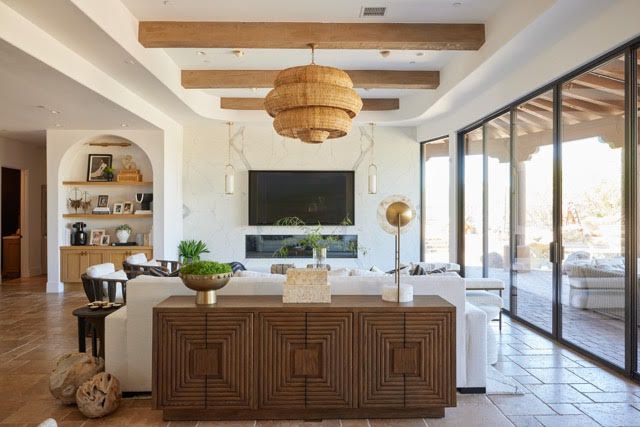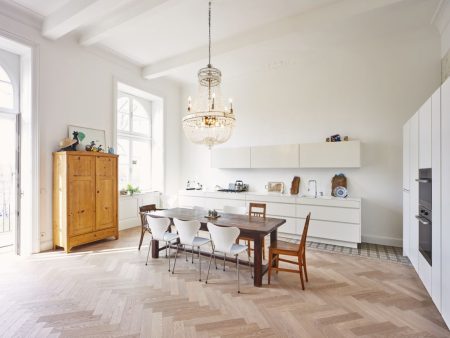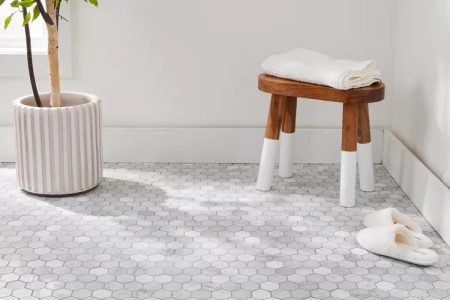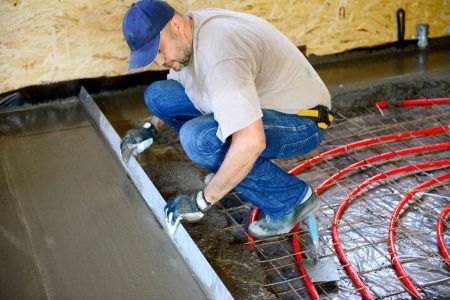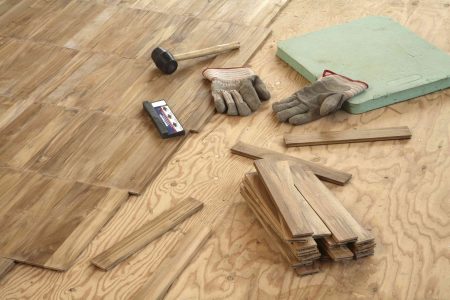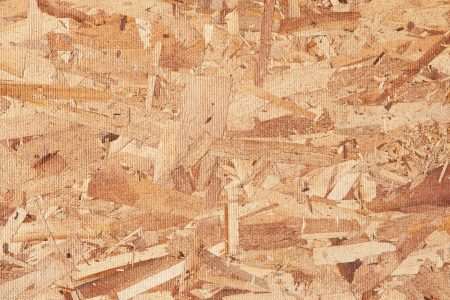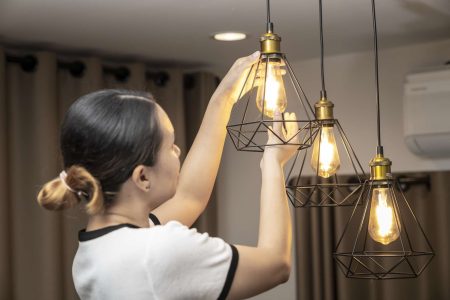Flooring is quite literally the foundation of any room. It serves many functions in the home and helps set the stage for how you will design the space. So what do you do if your home has ugly floors you can’t replace?
Whether you are renting or simply don’t have the budget for a big renovation, sometimes, you have no choice but to live with the ugly floors your home already has. Whatever the reason, interior designers have some clever tricks for decorating around ugly floors to make them less noticeable.
Meet the Expert
- Galey Alix is an interior designer and content creator. Her design solutions include a recently launched Galey Alix x Livabliss area rug collection.
- Jodi Peterman is the CEO and owner of Erin Elizabeth Designs, a nationwide residential, commercial, and vacation rental interior design firm.
- Paulina Thomas is the principal designer of Studio Artise Interiors based in Phoenix, Arizona.
Lay Down Oversized Rugs
Designers agree that the best way to hide unsightly floors is to cover them with area rugs. While the general recommendation is that your rug should be large enough to reach a few inches under all of your furniture, bigger is always better if you’re trying to draw attention away from the floors, says interior designer and content creator Galey Alix.
“While I’ll still leave a border of flooring showing around the perimeter of the room, covering the majority of the space with a rug I love is a game changer for hiding floors,” Alix says.
That means if you’d typically choose an 8×10 area rug for your room, don’t be afraid to opt for a larger 9×12 or 11×14 if space permits. The same goes for narrow hallways or smaller rooms—use area rugs wherever possible.
Want more design inspiration? Sign up for our free daily newsletter for the latest decor ideas, designer tips, and more!
Use Oversized Furniture
Similarly, Alix suggests choosing oversized furniture to help distract from ugly flooring.
“It becomes the focal point of the room and helps visually block off some of the flooring you might otherwise see with more diminutive furniture,” she says.
Think large sectionals, double-wide nightstands, oversized coffee tables, chunky ottomans, and more.
However, you need to be cautious not to overcrowd the space. The goal is to distract from the flooring, not clutter the area. Keep it simple and choose larger pieces where appropriate for a clean and sophisticated look that catches the eye.
Pull Your Eyes Up
In addition to covering the floors, one of the most straightforward and intuitive ways to distract from ugly flooring is to create focal points in the top half of the room to draw attention upwards.
“My go-to is to create what I call ‘ceilingscapes,’ which is basically anything that works to enhance the look of your ceiling,” Alix says. “Try things like new lighting, wood patterned ceilings (like herringbone or nickel gap slats), beams, molding, or even painting a ceiling the same dark color as your walls.”
You aren’t limited to the ceiling—the walls are fair game, too. Gallery walls, statement artwork, feature lighting (sconces, for example), wood paneling, wallpaper features, and more are all simple ways to keep visual interest at wall level, not floor level.
Play With Lighting
Good lighting can make even the ugliest floors less noticeable, says Jodi Peterman, owner and CEO of Erin Elizabeth Designs.
So, what exactly is ‘good lighting’? You want to avoid overly bright, cool-toned light, which can make a space feel sterile and uninviting. Only having one light source (such as a harsh overhead fixture) can have the same effect.
Instead, opt for warm, soft lighting and add multiple light sources in the space, such as table lamps, floor lamps, and wall sconces.
Distract With Color and Texture
Color and texture can also be invaluable tools when you’re trying to draw focus away from ugly floors. The key is to be smart about where you use it.
Keep bold colors and textures above floor level to draw the eye up and away. This can be done with bold, colorful artwork; statement lighting; or even dramatic curtains, Peterman says.
Use Neutrals to Combat Visually Loud Floors
On the other hand, if your home has visually loud floors (think dark colors, high contrast, or bold patterns), Peterman recommends using neutral colors to provide balance. The last thing you want is added chaos from too many bold details or clashing colors, which can also unintentionally draw more attention to the floors you’re trying to hide.
Light and airy colors like off-white, creamy neutrals, soft browns, and grays can help create a sense of calm and stability.
Paulina Thomas, principal designer at Studio Artise Interiors, took this approach when tasked with working around the dated French pattern tumbled travertine tile in her client’s home.
“Materials like white oak, marble, layers of textures and an abundance of beautiful lighting helped soften the dated look of the tile by keeping the eye off the floor and focused upward instead,” she says.
Lean Into It (Sometimes)
Last but not least, sometimes, it’s best to lean into the “ugly” and see if you can embrace it in all its glory, says Peterman. Admittedly, this isn’t always an option, but in some cases, you may be able to find a style that works with the flooring you have, so you don’t need to work so hard to hide it.
“I had a client with terrazzo flooring that was all kinds of ick at first glance,” she says. “But we worked it into the design by adding mid-century modern furniture and a few retro touches, and suddenly, the floors looked intentional and even stylish.”
Read the full article here







